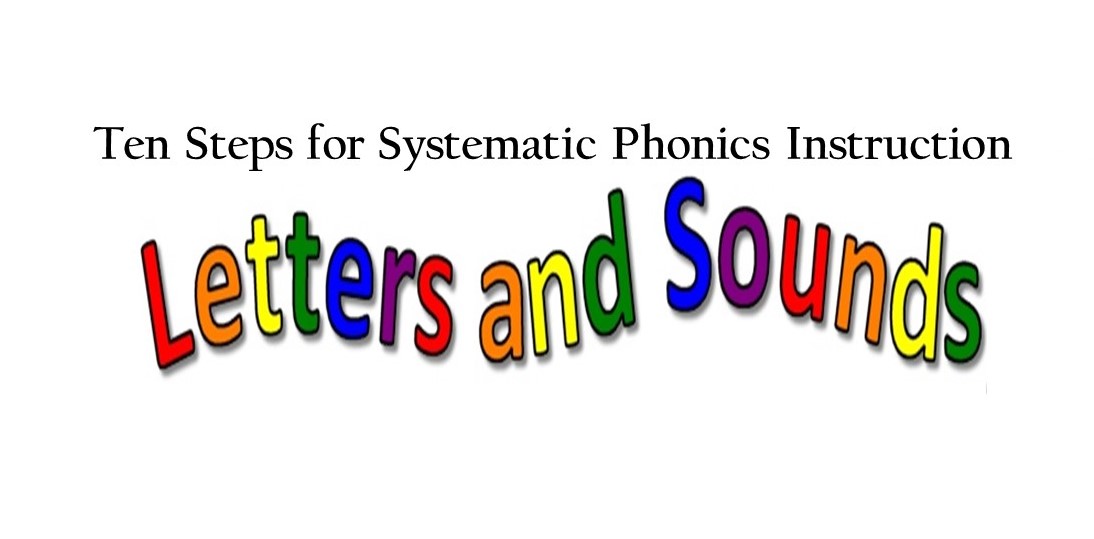Systematic phonics instruction is best taught once print awareness, letter recognition, and phonemic awareness are acquired. Next begin by teaching the letter sounds, letter patterns, and blending as follows. Reaching step six will take weeks or months, depending on the child and the time given for instruction.
- Teach lowercase letters for beginning instruction. Lowercase letters are used most often in print. Therefore, lowercase letters are recommended for beginning phonics instruction of letter sounds.

- Introduce short vowels and most useful consonant letter sounds. Begin with continuous consonant (f, l, m, n, r, s), short and long vowel sounds. Add consonants b, c, d, f, h, m, n, p, r, s, and t. Introduce the consonant-vowel-consonant (C-V-C)) spelling pattern (e.g. mat, sit, run) to initiate blending, then add long vowel spelling patterns.
- Introduce more difficult letters and sounds. More difficult and less frequently used sounds should be introduced after the ones listed above-/j/, /v/, /x/, /y/ and /z/. Instruction for visually similar letters-b, d, and p; m and n; p and q; v and w should not be introduced together. Also letters with similar sounds-/b/, /d/, and /p/; /e/ and /i/; /f/ and /v/; and /m/ and /n/) should be separated for instruction.
- Teach the most common sound of letters first. For the beginning readers, teach short and
 long vowels, avoiding irregular sounds for these letters. Teach the most common sound of c, g, and s, postponing the irregular sounds of these letters (e.g. c in ice, g in germ, and s in sure) for later.
long vowels, avoiding irregular sounds for these letters. Teach the most common sound of c, g, and s, postponing the irregular sounds of these letters (e.g. c in ice, g in germ, and s in sure) for later.
- Teach continuous sounds prior to stop sounds. Continuous sounds include all vowels and f, l, m, n, r, s, v, w, y, and z. Stop sounds include b, c, d, g, j, k, p, q, t, and x. Continuous sounds are taught first because they are easier to pronounce and hear. Research suggests the following instructional sequence for introducing lowercase letters: a, m, t, s, i, f, d, r, o, g, l, h, u, c, b, n, k, v, e, w, j, p, y, x, q, and z.
- Teach sound blending early. Once students have mastered 4 or 5 sounds, blending can begin. Initial letter-sound correspondence can be used to decode C-V-C patterns. Begin by blending simple C-V-C and V-C letter sounds into words before introducing other phonetic patterns. Research suggests the following sequence for introducing phonetic patterns:
- V-C and C-V-C words that begin with continuous sounds (e.g., at, man).
- V-C-C words and C-V-C-C words that begin with continuous sounds (e.g., ask, fish).
- C-V-C words that begin with stop sounds (e.g., dot, cap).
- C-V-C-C words that begin with stop sounds (e.g., desk, push).
- C-C-V-C words that begin with continuous sounds (e.g., slap, frog) and C-C-V-C words in which one of the initial sounds is a stop sound (e.g., crib, stop).
- C-C-V-C-C words (e.g., cramp) C-C-C-V-C words (e.g., split) and C-C-C-V-C-C words (e.g., scrimp).
- Introduce consonant blends. Consonant blends have two phonemes-each letter has a sound. When students have mastered blending the C-V-C pattern with continuous and stop consonants, introduce consonant blends (e.g., br, cr, dr, fr, gr, pr, and tr), followed by teaching words that end with a consonant cluster (e.g., nd, nk, sk, st).
- Introduce consonant digraphs. Unlike blends, consonant digraphs have one sound (e.g., sh and th). As with consonant blends, digraphs occur in both initial and final positions of words.

- Introduce irregular phonemes and phonetic patterns. Irregular phonemes are introduced when students understand and are able to use regular patterns in phonics. Introduce rules for digraphs and diphthongs and practice with words in text.
- Practice the phonetic patterns by reading text. Use phonics readers and good literature to provide practice and reinforcement of phonics skills. Practice, practice, practice to make progress and develop a love for reading!

